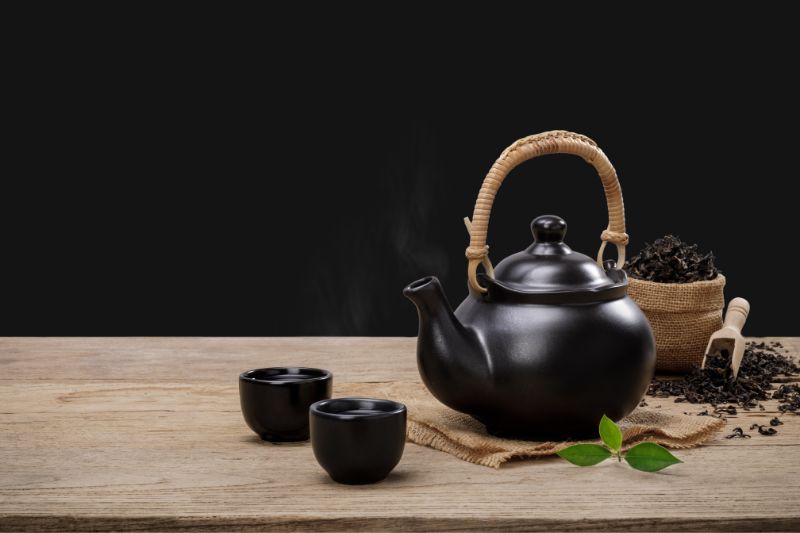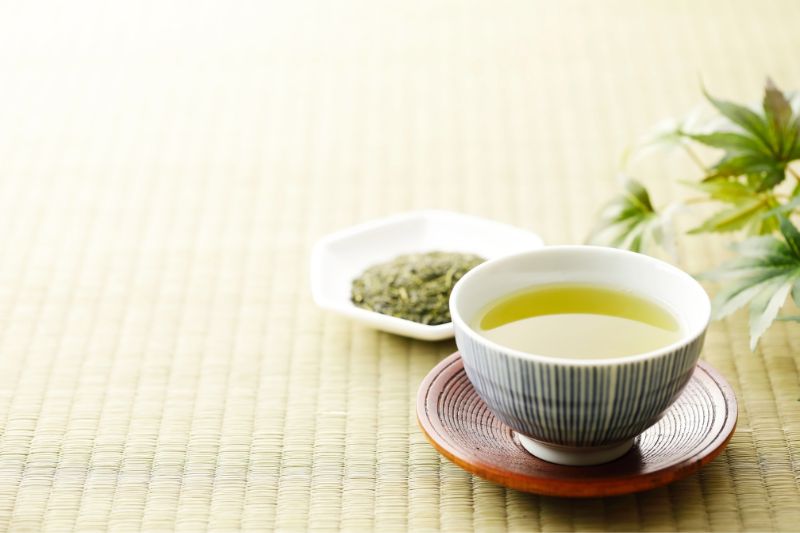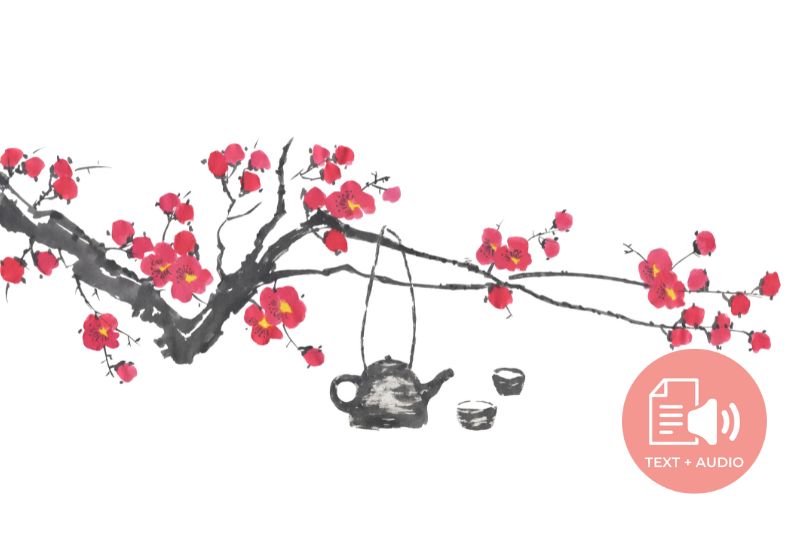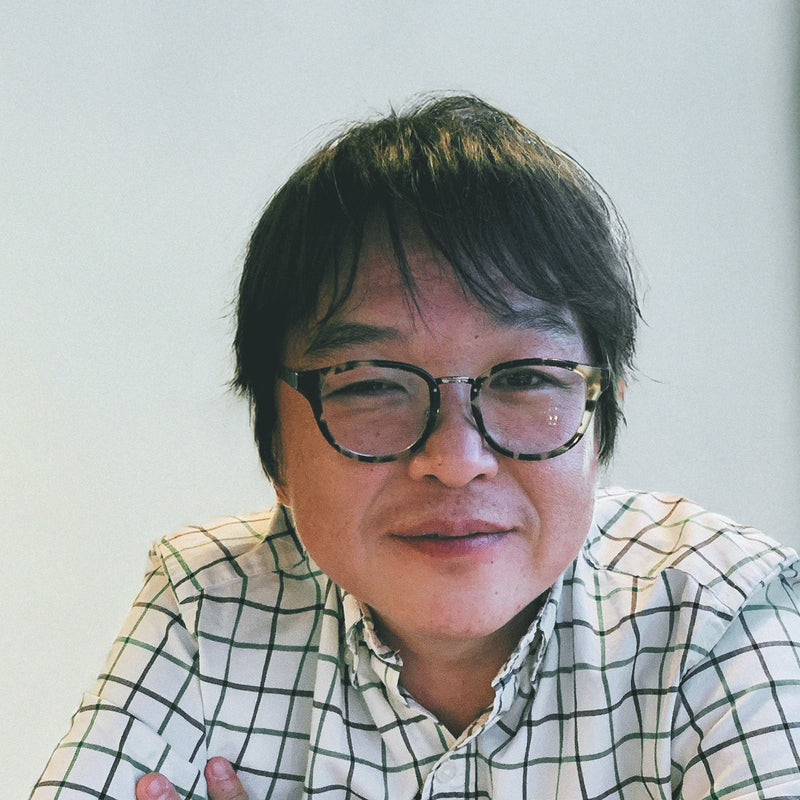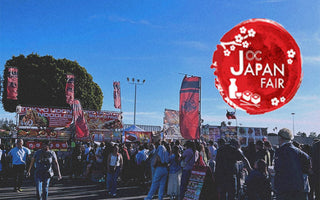Who is Sen No Rikyu?
In this blog, I will talk about many things related to Japanese tea and tea culture, but today’s post is a little extra special. Today, I want to talk about a person—yes, a person called Sen No Rikyu (千利休). Without this person and his contributions, the tea culture in Japan, or Sadou (Japanese "Way of Tea"), we have today would not have existed, and I might not have been here sharing the love of tea with everyone around the world. Just like how it would be impossible to talk about English literature without mentioning Shakespeare, it is impossible to talk about Japanese tea philosophy and not pay homage to Sen no Rikyu. It is also essential to know about Rikyu's philosophy, practices, and teachings because it allows us to have a deeper understanding and a connection to the Japanese Way of Tea.
Why is Sen No Rikyu Such a Significant Figure in the History of Japanese Tea Culture?
Sometimes, Rikyu is mistaken for the founder of Japanese tea ceremony. However, Japanese tea ceremony, or Sadou, existed way before Rikyu was born. The point to note is that Rikyu brought revolutionary changes to the Japanese Way of making tea. As a result, most of the practices and teachings alive today in Sadou come from Rikyu and his family line.
- The three most influential schools of Japanese tea ceremony of current days – Urasenke(裏千家), Omotesenke(表千家), and Mushakojisenke (武者小路千家), are descendants of Sen no Rikyu. Hence, they are called San-Senke, meaning "The Three Sen families." Although they have minor stylistic differences, at the core, they follow Sen No Rikyu's teachings and values and share his spirit of Wabi-cha.
Rikyu also made an immense contribution by combining the philosophy of Wabi-sabi with the Japanese tea ceremony, and as a result, he could perfect the art of Wabi-cha. Another essential fact about Rikyu's life is that he had a very close relationship with two of the most influential political figures in Japan’s Sengoku era (1467–1615): Oda Nobunaga (織田信長) and Toyotomi Hideyoshi(豊臣秀吉). Even though Rikyu served as a tea master and a close confidant to both, he was not afraid to share his own opinions and bring about bold changes in the tea ceremony, sometimes even going against what was popular in the political circle of that time. The fact that Rikyu served as a tea master at the Imperial Palace and was close to and respected by many politically powerful people made Rikyu’s teaching highly regarded by everyone, and his life’s work had an impact on the tea ceremony, whose effect can be seen even today in the Japanese tea culture.

Relationship between Rikyu and Oda Nobunaga
Oda Nobunaga (1534–1582) is one of the most influential figures in Japanese history. He is known as "the great unifier of Japan." He was the most powerful daimyo (feudal lord) of the Oda clan and unified half of Japan by overthrowing the Ashikaga Shogunate.

Oda Nobunaga
He had deep regard for Japanese tea, and for him, it was not only a cultural thing but also a political strategy. The policy founded by Nobunaga, called ‘Ochanoyu Goseido’, made the tea ceremony license an official requirement for a Samurai house to be qualified as a proper Samurai family. On top of that, Oda Nobunaga came up with the idea to reward his vassals with valuable "Chaki"茶器 (the container in which the tea powder for the tea ceremony is kept) instead of land, as Japan was limited in terms of land availability. So, having a certain "Chaki" given by Nobunaga was a great status symbol among the lords of that time. One ‘Chaki’ could be worth hundreds of millions of yen. And hence, the importance of the tea ceremony within political circles was heightened to a peak level.
Around 1568, Nobunaga conquered Kyoto, and Sakai (the hometown of Rikyu) came under the direct control of Nobunaga. Also, Nobunaga used to buy tea ceremony equipment (e.g., Chaki) from Sakai. From Sakai, Nobunaga chose only the best among the best to serve as his private tea master and assist him in holding tea ceremonies at the Imperial Palace. Rikyu was among the select few chosen by Nobunaga. In this way, Rikyu started to work as the head of the tea ceremonies held at the Imperial Courts. At this time, Rikyu was 58 years old.
Relationship between Rikyu and Toyotomi Hideyoshi
After Nobunaga died in 1582, Toyotomi Hideyoshi became the de facto leader of Japan, continuing the legacy of Nobunaga to bring together the warring states of Japan into one unified nation. Like Nobunaga, Toyotomi Hideyoshi (1537–1598) is one of the most influential and powerful figures in Japanese history. Nobunaga and Tokugawa Ieyasu (who rose to power after Hideyoshi) are called the three great unifiers of Japan. However, Nobunaga, Hideyoshi, and Tokugawa had significant differences in their characters and leadership styles. There is an excellent Japanese story about a Hototogisu (cuckoo bird) and the three lords, which helps us understand their personalities very easily.

Toyotomi Hideyoshi
Nobunaga, Hideyoshi, and Ieyasu watched a cuckoo bird that was not singing. Each of them says the following to the bird:
Nobunaga: "Little cuckoo bird, if you don’t sing, I shall kill you."
Hideyoshi: "If you don’t sing, I will make you sing."
Tokugawa: "If you don’t sing, I will wait until you start singing."
Rikyu worked closely with Nobunaga, but he was even closer to Hideyoshi. Rikyu was not only the head tea master for Hideyoshi but also his most trusted confidant.
The story of how Sen no Rikyu came to be known by this name also involves Hideyoshi. In 1585, Hideyoshi prepared a vital tea ceremony for the then-Emperor of Japan, Emperor Ogimachi. This tea gathering was held at the Imperial Palace, but anyone who wanted to enter the palace required specific credentials. To make sure that Rikyu, who was still known by his birthname Yoshiro Tanaka, could enter the palace without any problem and be able to help Hideyoshi with the ceremony, Ogimachi bestowed upon Yoshiro a unique Buddhist name: Rikyu Koji. This is how Yoshiro’s name has been etched in history as Sen no Rikyu.
In 1587, Toyotomi Hideyoshi held a grand tea ceremony at Kitano Tenmangu Shrine in Kyoto. Many historians consider this tea ceremony one of the most important cultural events of the Momoyama period (1568–1600). The event's name was Kitano Ochanoyu (meaning the Grand Kitano Tea Ceremony), and the tea master who was responsible for hosting it was none other than Sen no Rikyu. That is how highly Rikyu was regarded not only by Hideyoshi but also by everyone involved in the Japanese tea culture.
Although the relationship between Hideyoshi and Rikyu had been a wonderful thing for the flourishing of Japanese tea culture, it sadly did not end well for Rikyu. Although the actual reason is not known, Hideyoshi ordered Rikyu to commit Seppuku (ritualistic suicide), which took away the life of this great tea master. We will discuss this more later in the section about Rikyu's death.

The Story of 'Only one Asagao (morning glory) flower.’
This is a famous story that I must share when talking about Sen no Rikyu. It is so significant because it shows the importance of the "Ichi-go Ichi-e" philosophy in Sadou. It also shows how well Rikyu understood this philosophy and perfectly applied it to how he welcomed his guests for the tea ceremony.
One day, Rikyu invited Hideyoshi to his 'Asagao Tea Ceremony'. Asagao in Japanese means morning glory flower, and as you might already know, seasonal flora and fauna have an essential relationship to the aesthetics of the tea ceremony.
When Hideyoshi heard of Rikyu’s Asagao tea ceremony, he went in, expecting a garden full of morning glory flowers or a large bouquet of morning glory flowers in full bloom. However, he was in for a surprise. When he arrived at Rikyu's tea hut, there was not a single morning glory flower in the garden! He became even more surprised when he realized that all the flowers had been plucked out of the plants in Rikyu's garden. As you can imagine, he must have been enraged, disappointed, and confused. Here he was, the most powerful man in Japan at the time, made to feel tricked into coming to a tea ceremony without any Asagao flowers.
Feeling frustrated, Hideyoshi walked into Rikyu’s small tea hut, and it was darkened, with only a single bright ray of light entering through a small opening from the window. Hideyoshi’s eyes followed the direction of the light, and there it was—just one beautiful morning glory flower in full bloom, presented inside the Hanaire (flower container) that had been hung on the wall. That is when it hit Hideyoshi. Rikyu went through the effort of cutting away all the other morning glory flowers in his garden, picked up only the very best one, and presented it to Hideyoshi. This moment of surprise and amusement that he created only for Hideyoshi's tea ceremony is the Japanese philosophy of ‘Ichi-go Ichi-e’ at its finest, a philosophy that means "One time, one meeting," implying that a chance to meet someone is a lifetime opportunity, so even if we are meeting the same person often, we have to treasure every single meeting with that person as the only one and make the best out of it.
How Sen No Rikyu Changed Sadou (Japanese tea culture) Forever
One of the main reasons Rikyu is regarded as the most crucial tea master in Japanese history is the significant changes he brought about in both the physical and spiritual details of the Japanese tea ceremony. Let's look at each of the aspects of Sadou that Rikyu redefined and perfected.

Core Values, Principles, and Spirit (Wabi-cha)
When Rikyu served as a tea master, Japan was undergoing the Sengoku era (or Warring states era). The political climate was turbulent, and the states were in constant battle. As much as the tea ceremony was practiced as an art form, it was also a political tool. Important political figures showed off their riches and power in the form of luxurious and expensive tea rooms, tea equipment (bowls, stirring sticks, etc.), and tea leaves.
Rikyu reminded everyone that Sadou is not about riches, luxury, and showing off one's power – it is finding beauty in humility and simplicity.
He incorporated the quintessential Japanese philosophy of ‘Wabi-Sabi’, and perfected Wabi-Cha. Wabi-Sabi has its roots in Zen Buddhism, and it is finding beauty in the imperfection, impermanence, and simple things of the world. He made the design of the 'Cha-shitsu (tearoom)' minimalistic and started to use simple everyday objects as tea equipment. He also emphasized the spiritual side of the tea ceremony rather than the materialistic.
“Though you wipe your hands and brush off the dust and dirt from the tea vessels, what's the use of all this fuss if the heart is still impure?”
“How much does he lack himself, who must have many things?”
These two sayings by Sen no Rikyu reflects his values regarding the tea ceremony; that tea ceremony is not about having many expensive tools and pots, nor does it have a shining tearoom; it is about having a clean heart and appreciating the little things around you in the nature.
Architecture
In the Japanese tea ceremony, Cha-shitsu (tearoom) is a room or a building built solely for performing the tea ceremony. Before Rikyu, this Cha-shitsu was constructed as a large space to entertain many guests, and it was also popular to use wooden parts that looked polished and expensive. We might know about Hideyoshi's famous Ogon no Chashitsu (The Golden Tea Room). It was built during the 1580s by Hideyoshi's order to show off his power and wealth. In this tearoom, everything was covered in gold, even the Shoji (sliding doors!). This room, full of opulence and made with gold, silk, and other expensive materials of the time, was entirely against the Wabi-sabi rustic aesthetics. This gives us a good example of what was the norm during Rikyu's time and how Rikyu still had the courage to go against Hideyoshi and the famous tearoom culture at the time in order to uphold the values of Wabi-cha.

Rikyu built a Chashitsu that is one of the smallest tea rooms ever made. This Chashitsu, called the ‘Tai-an,' consisted of only two tatami mats and had a total area of only 2-jo (about 3.6 square meters, one Jyo is just enough space for one person to sit). So essentially, it was just enough space for the host of the tea ceremony and a guest to sit. It was built in the So-an (grass hermitage/ thatched hut) style, which is designed like an ordinary rural cottage, and created using clay, logs, and bamboo. Nowadays, this Chashitsu called Tai-an, built by Rikyu, has been designated a National Treasure status in Japan and is preserved in Kyoto.
Main components of Tai-an (Rikyu's Chashitsu) and their hidden meaning:
- Stepping stones – The path that leads through the garden to the entrance of the Chashitsu has several irregularly shaped stones arranged randomly. Rikyu did not use smooth, uniformly shaped stones because he wanted to keep the spirit of 'imperfection' from Wabi-sabi.
- Nijiri Guchi – Nijiri Guchi was a special kind of entrance to the Chashitsu made by Rikyu. It measured only about 24 x 24 inches, and anyone who would want to enter, even if he were a Samurai, would have to take off his armor and swords and enter by bending down as if they were bowing to show humility.
- Windows – Rikyu arranged the two windows of his Chashitsu in a very non-traditional way – they were not aligned with each other. The sizes of the windows are also different from each other. This was done intentionally so that the interior looks like they are part of nature – irregular, random, and not restrained within a fixed structure. Also, the paper Shoji (covering of the window) allowed light and shadow to play inside the tearoom, depending on the natural light outside. Inside Rikyu’s Chashitsu, one could hear the leaves rustling, the birds chirping, and the rain falling, which means they were one with nature even when sitting inside the room.
- Interior - Rikyu used inexpensive materials like clay, rough logs, straw, bamboo, etc., to make his Chashitsu. The walls made of grey clay had a rustic, unfinished feel to them. This was important to keep in accordance with the spirit of Wabi-Sabi that things are not polished or shiny – they are natural and impermanent.
Teaware and Accessories for the Tea Ceremony
During Rikyu's time, the components of the tea ceremony, such as the calligraphy scroll, flower vase, tea container, tea bowls, etc., were all a way to show off wealth and social status. Therefore, expensive items, usually imported from abroad, were used. Rikyu changed this materialistic culture by using everyday objects as tools for the tea ceremony and introducing the use of local artisanal objects.
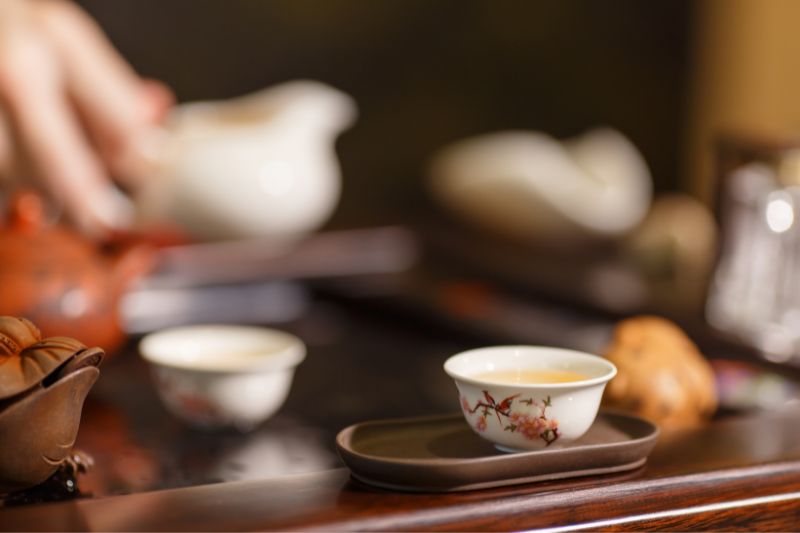
- Hanaire (Flowerpot): During Rikyu's time, it was fashionable to use large, colorful flower bouquets, but Rikyu preferred very subtle flowers. Rikyu also used to practice Ikebana (Japanese art of flower arrangement), so he understood what kind of flowers to use for what occasion. For the flower container, he used everyday objects. For example, a famous one is called Onjouji – a flower pot made by Rikyu using a piece of bamboo. This bamboo pot had a crack, and water was dripping from it. When one of his guests pointed it out, Rikyu said, 'This water is life.' This shows that in the spirit of Wabi-sabi, objects are supposed to have an imperfection, and with time, things will break and have cracks, but these imperfections have a beauty of their own.
- Raku Teaware: Before Rikyu, shiny, golden, and expensive tea ware imported from China, called "Karamono," were in fashion. Rikyu changed this trend as well by making a certain type of teaware in collaboration with an artisanal potter from the locality called Riku Chojiro. And this is how we have the famous Japanese Riku-ware. Guess what the color of this Riku ware was – Black! Who would have come up with the idea to use black (regarded as grim, non-fashionable, and boring at the time) tea bowls instead of golden? However, there is more to Riku ware than just its color. Riku tea bowls are hand-molded instead of being made by machines. Also, the clay bowls are baked at a lower temperature, resulting in a porous, non-uniform, and un-smoothened surface. This allows the guests to pay more attention to how the bowl 'feels' rather than how the bowl 'looks,' creating a deeper focus and connection to the objects used for the tea ceremony.
Rikyu’s Final Tea Ceremony before he was Killed by Hideyoshi
Although Sen no Rikyu served as the head tea master for Hideyoshi for a long time, they had major differences in their views about the world. Hideyoshi ordered Rikyu to commit Seppuku (a ritual where a samurai has to cut open his abdomen and commit suicide) in 1591. There are many theories about why this tragic ending happened, and the true reason remains a mystery.
Rikyu performed one final tea ceremony before his death. He gathered some of his closest ones at his Jurakudai residence in Kyoto, hosted a tea ceremony, and read a poem. Then he committed Seppuku.
One can even visit Rikyu's grave at Jukoin Temple in Kyoto. Every year on March 28th, the Urasenke family observes a memorial ceremony dedicated to Rikyu.
Rikyu Hyaku-Shu (The hundred poems of Rikyu) –
Rikyu's morals and teachings are beautifully written in the form of songs and poems:
Sadou (the art of Japanese tea) might sometimes appear to be detached from ordinary life – but it is not so. The philosophy of Sadou can be applied to our daily lives, and Rikyu’s 100 poems are a perfect example of how one can use the values of Sadou to improve their everyday life. One of the most famous poems from Rikyu's Hyaku-shu is as follows:
“その道に入らんと思ふ 心こそ我身ながらの師匠なりけれ” which means,
“The best teacher you can ever have is your own determination to enter a certain path.”
The meaning behind this poem is that when you first enter the way of tea, there is a lot to learn. You might even feel like a deer in headlights, practically clueless. However, when you first begin something from zero, you are full of eagerness to learn. You are ready to listen to your teacher, develop yourself, and improve as much as possible. As time goes by, you might become more familiar with the techniques of the tea ceremony, but it is essential to not lose 'the feeling' you had when you first entered the 'Way of tea.' So that you can continue to keep on improving, always trying to better yourself from what you are now. As you can see, teaching like this can be applied to any area of our life, even outside our tea ceremony practices; whether it be your first day at the job, the first day of becoming a parent, or the first day at school – your eagerness to learn and improve yourself will always be your best teacher.
Who is Sen No Rikyu – a quick look:
|
|
|
Details |
|
Birth |
Born Yoshiro Tanaka in 1522. |
He was born to a family of warehouse owners in Sakai (current day Osaka prefecture) |
|
Sadou training and education during early years |
Started training at the age of 17 under the tea master Kitamuki Dochin. Then he trained under the famous Takeno Jo-o. He also studied Sadou in one of the most prominent tea establishments – The Daitokuji temple in Kyoto. |
Takeno Jo-o is one of Osaka's most influential tea masters, who had also undergone extensive Zen training. With influences and teachings from him, Sen no Rikyu took Wabi-cha further, developing his unique, rustic tea style. |
|
Given name/ titles/ and other names. |
|
The title name Rikyu Koji was given by Emperor Ogimachi so that Rikyu could enter the Imperial Palace to help with the tea ceremonies. |
|
Major contributions to Sadou/ Chanoyu (Japanese way of tea) |
The founder of Wabi-cha (a style of tea ceremony that emphasizes simplicity) |
Rikyu incorporated the Japanese philosophy of Wabi-sabi into the tea ceremony. He created a tea ceremony style that focused on using rustic equipment and teaware and upheld the beauty of local craftsmanship instead of lavishness and imported equipment. |
|
Major historical figures under whom Rikyu served as a tea master |
|
They are two of the greatest names in Japanese history, and both were powerful political figures in the Japanese feudal era. The changes Rikyu introduced to the tea culture found their way through the political sphere at the time and had a long-lasting impact on the tea culture of Japan. |
|
Art forms practiced by Rikyu. |
|
There are beautiful poems written by Rikyu, which were also used in the kakejiku (hanging scrolls) used in the tea ceremony room. Rikyu designed the famous Raku chanoyu (tea bowl) in collaboration with a local artisan tile maker. His architectural genius can be seen in designing so-an (grass hermitage) tea rooms. |
|
Notable disciples |
|
Apart from them, there were seven disciples under Sen No Rikyu who were of high political status and were daimyos (generals). They were called "The Seven Luminaries." |
|
Death |
March 21st, 1591, in Kyoto |
Tragically, he was ordered to commit Seppuku (ritualistic suicide) by Hideyoshi. So he performed a final tea ceremony and committed Seppuku. |
Conclusion
On this note, I would like to welcome all of us to continue in our endeavor to learn more about Japanese tea and the philosophy of Sadou. Also, I would like to summarize the important things we can learn from Sen No Rikyu's life and teachings:
- Sadou is not about showing off our luxury but more about humility, being one with nature and appreciating the imperfection and simple things in our everyday lives.
- The Japanese tea ceremony is not only about external techniques and equipment. The inner spirit, soul, and heart of Sadou are equally important and have deep roots in Zen Buddhism, including the values of Wabi-sabi and Ichi-go Ichi-e.
- In Sadou, every guest is equal, regardless of their social status, and they should all be welcomed as equals in the tearoom.
- Even when we have achieved a certain level of expertise in Sadou, we should never stop learning and always be as eager to improve as we were on our first day of Sadou.
I want to finish with a beautiful saying by Sen no Rikyu:
“The way of Chanoyu is only this – first, you boil the water, then you drink the tea.”
Let's keep tea simple and humble but full of heart and soul.
Additional Readings About Sen
If you are interested in reading more about Sen, here are few suggestions.
-
Hyouge Mono (へうげもの) - If you are into comics, this is a popular comic in Japan about the life of Sen.

-
Rediscovering Rikyu and the Beginnings of the Japanese Tea Ceremony

- Hideyoshi and Rikyū

-
Rikyu – 1989 film DVD

-
The Japanese Way of Tea

-
The Enjoyment of Tea

If you have any suggestions that you do not see here, please comment below.
If you could have a cup of tea with one person in history, who would it be and why? Let us know in our Facebook post 🍵🕰️
In this article, we introduced several legendary figures from the history of Japanese green tea.
Based on this theme, we asked our Facebook Group an exciting question:
"If you could share tea with someone from history, who would it be?"
The answers poured in, each one weaving a unique tale. We got a glimpse of our community's imagination and curiosity.
It's amazing how tea can spark such lively discussions! Stay tuned for more engaging talks that transport us through history, one cup at a time. Click here to join us as we continue these fun conversations!
• Disclosure: I only recommend products I would use myself, and all opinions expressed here are my
own. This post may contain affiliate links that I may earn a small commission at no additional cost to you.
The commission also supports us in producing better content when you buy through our site links.
Thanks for your support.
- Kei and Team at Japanese Green Tea Co.
Get Free Bonus Books

Sign up for free to the Green Tea Club to get advice and exclusive articles about how to choose Japanese Tea, and tips, tricks, and recipes for enjoying Japanese tea.
About the author
Kei Nishida
Author, CEO Dream of Japan
Certification: PMP, BS in Computer Science
Education: Western Washington University
Kei Nishida is a passionate Japanese green tea connoisseur, writer, and the founder and CEO of Japanese Green Tea Co., a Dream of Japan Company.
Driven by a deep desire to share the rich flavors of his homeland, he established the only company that sources premium tea grown in nutrient-rich sugarcane soil—earning multiple Global Tea Champion awards.
Expanding his mission of introducing Japan’s finest to the world, Kei pioneered the launch of the first-ever Sumiyaki charcoal-roasted coffee through Japanese Coffee Co. He also brought the artistry of traditional Japanese craftsmanship to the global market by making katana-style handmade knives—crafted by a renowned katana maker—available outside Japan for the first time through Japanese Knife Co.
Kei’s journey continues as he uncovers and shares Japan’s hidden treasures with the world.
Learn more about Kei




